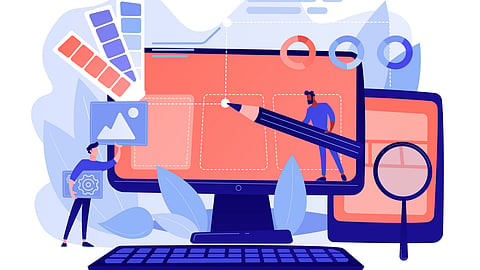User friendly digital magazine frontend
Digital transition of content continues at an accelerated pace, fuelled further by the Covid pandemic. While the media industry is beginning to understand the dynamics of news on digital channels and formulate user experience and revenue models around it, the print magazine industry is still struggling to come to terms with and adopt the digital revolution.
Let’s look at some of the reasons why magazines are struggling to make a digital transition
Magazines provide a superior reading experience as compared to a print newspaper.
Print magazine reader-base is mostly a loyal segment attracted to niche content in the magazine and wanting to preserve the issues as a collector-hobby, much akin to books. Be it India Today with its in-depth analysis of current events or a Femina with tips/tricks and decor insights
Print magazines work on a dual revenue model - subscription and ads. The full page ads in magazines are meant to attract a well-understood reader-base.
Print magazine owners have not found a solid alternative in digital yet that could replace even a fraction of the revenue they make via print.
There are 2 schools of thought on how the frontend for a digital magazine should evolve
One that proposes replicating the exact print magazine experience digitally. Flip readers have been one of the early solutions that continue to be a digital alternative for magazines but the user experience and readership they leverage remains questionable. There have also been PDF versions of print magazines that one can download and archive for one’s collection. But none of these experiences have enough interactivity to be truly labeled a rich digital experience let alone losing the audience insights that a truly digital form provides. That said, there are dedicated solutions that provide full-screen rich and engaging magazine reading experiences that scale on any device. But we haven’t seen enough adoption of this model, perhaps due to the investment required and unknown returns for this experience.
Another school of thought proposes presenting the content closer to the news content online but putting all the content behind a paywall.
However, it appears, if magazine content is blended with the daily news content on digital, users will soon fail to see the value proposition of magazines. That said, its yet to be seen if that is the direction that digital magazines will evolve into.
At Quintype, we allow our customers to build a rich magazine experience by using PageBuilder to create a Magazine introduction page as well as allow users to browse the various issues of the magazine much like a magazine stand. Individual issues could then be viewed much like a news section but using more of a magazine layout for articles, combining visual stories and other content types. Individual issues could be downloaded as pdf if required.
Quintype also offers native applications that maybe better suited for magazine content viewing experience.
Magazines can be put completely behind a paywall. A hybrid model of providing both Print and digital editions that most publishers are experimenting with is also possible with a single subscription.
All said and done, the evolution of magazines from print to digital is ongoing with publishers taking bold steps and experimenting with various models. It remains to be seen what will emerge as a successful model, a dissolution of magazines into other news-like content or a rich engaging experience or perhaps a hybrid of all the possibilities discussed.


